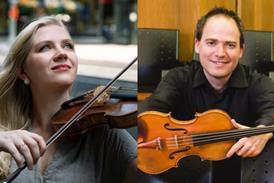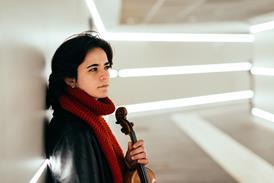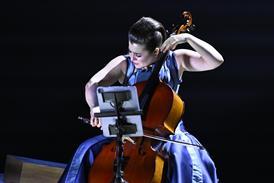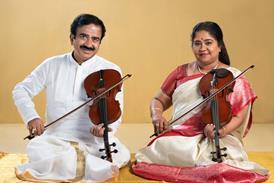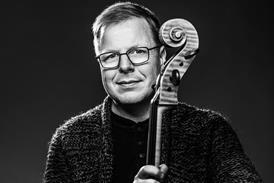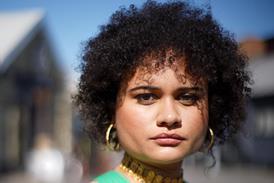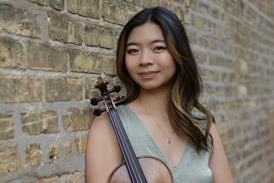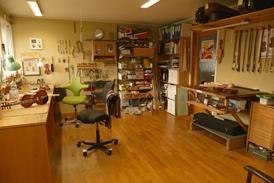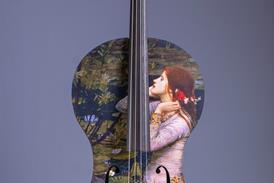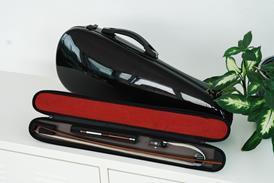Lutherie – Page 18
-
 Premium ❘ News
Premium ❘ News'You raise me up': Women in Lutherie
An online community founded by and for women in lutherie has grown in leaps and bounds over the past three years. What are the benefits for the female contingent? By Harry White
-
 Premium ❘ Focus
Premium ❘ FocusFemale luthiers: And justice for all?
In light of the #MeToo movement, women from all walks of life have been reporting incidents of sexist behaviour in their workplaces. Is a violin workshop any different? Femke Colborne discusses the question with a range of female luthiers – and gains a grim perspective of the industry
-
 Premium ❘ Feature
Premium ❘ FeatureEarly lutherie experience: The journeyman years
The time spent between finishing at violin making school and striking out on your own can be critical to a luthier’s learning experience. Peter Somerford finds out what makers should expect from their first jobs in a workshop – and how they can make the most of their time
-
 Premium ❘ Feature
Premium ❘ FeatureCremonese violin moulds: The well harmonised mould
The logic governing the structure of Stradivari’s violins remains a mystery. André Theunis and Alexandre Wajnberg take a fresh look at his moulds to find an intriguing system of proportions, utilising the tools and measuring systems of his day
-
 Premium ❘ Feature
Premium ❘ FeatureThe Venetian double bass: Venetian splendour
Many of the great Italian double bass makers lived and worked in the city of Venice. Thomas Martin, George Martin and Martin Lawrence tell the stories of some of the leading names in the trade, with commentary on a number of their instruments
-
 Premium ❘ Feature
Premium ❘ FeatureAmerican Master: William Salchow
With a career spanning six decades, William Salchow has had a huge influence on bow making in America. In this November 2012 interview conducted by former student Sue Lipkins, Salchow talks about everything from Wurlitzer’s and Mirecourt to creating the perfect head
-
 Premium ❘ Feature
Premium ❘ FeatureMy Space: Sam Zygmuntowicz
The luthier’s workshop, based in Brooklyn, New York, is spread across two floors, and includes a ‘salon’ where customers can test their instruments. From May 2015
-
 Premium ❘ Feature
Premium ❘ FeatureIn Focus: Team Player
Sam Zygmuntowicz examines the large proportions of this 1796 Mantegazza viola, which give it a powerful sound that makes it ideal for string quartets. From December 2003
-
 Premium ❘ Feature
Premium ❘ FeatureRecipe for success: Stradivari’s varnish
The search for Stradivari’s varnish formula has continued since the 18th century, but there have been few scientific analyses of the varnish itself. Stewart Pollens reveals the results of his recent study of the varnish on five of Stradivari’s instruments, in this feature from May 2009
-
 Premium ❘ Feature
Premium ❘ FeatureStradivari’s varnish: a chemical analysis
Jean-PhilIppe Echard and Balthazar Soulier reveal the results of their seven-year research into Stradivari’s varnish, using five of the master’s instruments from Paris’s Musée de la Musique. From April 2010
-
 Premium ❘ Feature
Premium ❘ FeatureThe Strad Calendar 2022: Dutch treasures
The Strad Calendar 2022 showcases twelve of the finest instruments belonging to the Dutch Musical Instruments Foundation. Head of collection Frits Schutte outlines its work, while Hubert de Launay gives a tour of the riches
-
 Premium ❘ Feature
Premium ❘ FeatureOptical effects in Lutherie: Reflected Glories
Why do some instruments look completely different in varying kinds of light? In this lutherie feature from August 2013, Michael Molnar explains how an understanding of wood, varnish and their optical interactions can produce magical results
-
 Premium ❘ Feature
Premium ❘ FeatureBetween the Baroque and modern age: Vuillaume’s ‘Messiah’ Strad
Stefan-Peter Greiner examines Vuillaume’s unorthodox method of fastening and extending the neck in his copy of the ‘Messiah’ Strad. From November 1996
-
 Premium ❘ Feature
Premium ❘ FeatureViola sizes: Size does matter
Viola players everywhere know the difficulty in finding the perfect instrument – but how many realise the differences that size, shape and weight can make to playability and tone? William Castle gives a step-by-step guide to finding the one that’s right for you
-
 Premium ❘ Focus
Premium ❘ FocusThe geometry of violin outlines: Proportional representation
In this article from March 1990, Leslie Wyatt offers a rational and coherent geometrical method for the construction of an inner form outline and for sizing and positioning the f-holes, to break free from the traditional slavish reproduction of classical instruments
-
 Premium ❘ Feature
Premium ❘ FeatureClimate conundrum: Does wood from the ‘Little Ice Age’ account for the brilliance of Stradivari’s violins?
Did Stradivari have superior wood because of exceptionally low temperatures during his lifetime? In this article from April 2014, John Waddle, Steve Rossow and Steve Sirr investigate the idea using CT scans of Cremonese instruments
-
 Premium ❘ Feature
Premium ❘ FeatureThe ‘Betts’ Stradivari: The progress of progress
A century after The Strad published its first article on the Stradivari ‘Betts’ violin, maker John Waddle asks what the magazine’s descriptions of the instrument reveal about lutherie expertise, and explains his latest high-tech analyses of the instrument. Taken from the May 2010 issue
-
 Premium ❘ Feature
Premium ❘ FeatureMarkneukirchen: The rise and fall of Germany’s first violin factory
A small German town was the setting for an early experiment in violin mass-production. But outside economic forces threatened it from the very start. Arian Sheets traces its history, in this article from the April 2011 issue of The Strad
-
 Premium ❘ Feature
Premium ❘ FeatureViolin modal analysis – part two: Good vibrations
In the second of a two-part article from July 2009, Joseph Curtin continues his investigation of the low-frequency resonances that influence a violin’s acoustic behaviour
-
 Premium ❘ Feature
Premium ❘ FeatureTrade Secrets: Making a martelé button
A simple method for adding this small detail to your bows

